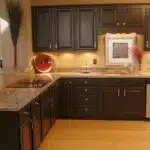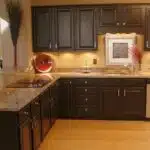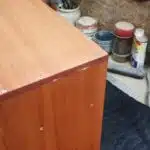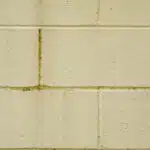Spray painting kitchen cabinets is an effective way to give your kitchen a fresh new look without the need for a complete overhaul. As a professional painter, I have seen firsthand the transformative power of spray painting cabinets in giving a kitchen a modern and updated feel. However, it is important to approach this task with care and precision in order to achieve optimal results.
As with any home improvement project, preparation is key. Before beginning the spray painting process, it is essential to properly clean and sand the cabinets in order to ensure that the paint adheres smoothly and evenly. Additionally, it is important to choose the right type of paint for your specific cabinets in order to ensure longevity and durability. In this article, we will walk you through the step-by-step process of how to effectively spray paint your kitchen cabinets like a professional, so that you can enjoy a beautiful and refreshed space for years to come.
Assessing Your Cabinets For Painting
As the old adage goes, preparation is key. Before starting any painting project, it’s important to assess the condition of your kitchen cabinets. Painting techniques vary depending on the cabinet’s current state, so it’s crucial to take note of any damages or imperfections before proceeding with the task.
First, inspect each cabinet for cracks, dents or scratches. If your cabinets have been previously painted, check if there are any traces of peeling or chipping paint. Cabinets with severe damages require additional repair work before painting can begin. On the other hand, minor scratches and dents can be easily fixed with some wood filler and sandpaper.
Next, evaluate the overall cleanliness of your cabinets. Grease and dirt buildup can hinder paint adhesion and result in an uneven finish. Cabinets that are heavily used may require a thorough cleaning using a degreasing solution to remove accumulated grime. Once you’ve assessed your cabinet’s condition and made necessary repairs and cleaning, you’re now ready to choose the right type of paint for your project.
Transitioning into choosing the right type of paint requires careful consideration as this will greatly affect the outcome of your project. Keep in mind that selecting high-quality paint is essential for long-lasting results that can withstand daily wear-and-tear in a kitchen setting.
Choosing The Right Type Of Paint
When it comes to painting kitchen cabinets, choosing the right type of paint is crucial. Two popular options are spray and brush paint. Spray painting offers a smoother finish and quicker application time, but requires more equipment and can be messier. Brush painting takes longer and may result in brush strokes, but allows for greater control and precision.
Another important consideration is the level of glossiness desired for the cabinets. Glossy finishes reflect light well and are easy to clean, making them a popular choice for kitchens. Matte finishes, on the other hand, do not reflect as much light and can hide imperfections better. Ultimately, the choice between gloss vs matte will depend on personal preference and the overall aesthetic of the kitchen.
When deciding on the type of paint to use for kitchen cabinets, it’s important to keep in mind factors such as durability, ease of maintenance, and color retention over time. Proper preparation before painting is also essential to ensure a long-lasting finish. By carefully considering all these factors, you can make an informed decision that will result in beautiful painted cabinets that will last for years to come.
Transitioning into the subsequent section about deciding on a color scheme:
Now that we have covered the importance of choosing the right type of paint for your kitchen cabinets, let’s move on to another crucial step: deciding on a color scheme that complements your kitchen’s design style.
Deciding On A Color Scheme
When it comes to spraying paint on kitchen cabinets, deciding on a color scheme is crucial. It sets the tone for the entire kitchen and can make or break the overall aesthetic. Color scheme inspiration can come from many sources such as Pinterest, interior design magazines, or even a favorite piece of artwork. It’s important to keep in mind that the colors you choose should be cohesive with the rest of your kitchen decor.
Matching cabinet colors to your kitchen decor can be a bit challenging but there are some general guidelines to follow. If your countertops and backsplash are neutral, adding a pop of color to your cabinets can create visual interest without overwhelming the space. On the other hand, if your kitchen has bold accents like brightly colored appliances or patterned tiles, it’s best to stick with neutral cabinet colors to balance out the space. Additionally, taking into consideration the natural lighting in your kitchen is important as it can greatly affect how certain colors appear.
Overall, choosing a color scheme for your kitchen cabinets is an exciting opportunity to express your personal style while also considering practicality and functionality. With some inspiration and careful consideration of your existing decor, you’ll be able to select a color that complements your space beautifully.
As you have now decided on a color scheme for your cabinets, it’s time to start gathering all necessary materials for painting them.
Gathering Your Materials
Once you have decided on a color scheme for your kitchen cabinets, it’s time to gather the best materials for the job. As a professional painter or spray painter, using high-quality materials is essential to achieving a smooth and even finish. While cost-effective options may seem tempting, they often result in a less-than-desirable outcome.
Investing in good materials such as high-quality paint, primer, and brushes or sprayers will ultimately save you time and money. Cheaper alternatives tend to require more coats and touch-ups which can prolong the process and end up costing more in the long run. Consider purchasing a spray gun if you plan on tackling larger projects as they provide an even coat with minimal effort.
Another cost-effective option is to remove the cabinet doors and hardware before painting them separately. This will not only make the painting process easier but allows for better access to hard-to-reach areas. It’s important to label each piece so that reassembling them later won’t be a hassle. By taking this extra step, you’ll also avoid any drips or smudges that could occur from painting everything while still attached.
With these tips in mind, gathering the best materials for your kitchen cabinet project will ensure a successful outcome. In the next section, we’ll discuss how to remove cabinet doors and hardware without damaging them so that you can begin prepping your cabinets for their new look.
Removing Cabinet Doors And Hardware
Before spray painting kitchen cabinets, it is necessary to properly prepare the cabinet doors by lightly sanding them with 150-grit sandpaper and wiping them down with a damp cloth.
The hardware must also be removed from the cabinet doors prior to spray painting.
To remove the hardware, use a flat head screwdriver to help remove the screws and gently take off the handle and hinges.
Make sure to keep all of the parts separated and in order to ensure that they are properly reassembled later on.
Preparing Cabinet Doors
Before removing the cabinet doors and hardware, it is important to prepare them properly for spray painting. This step involves measuring accurately and protecting surrounding areas. To ensure that everything goes smoothly, take accurate measurements of the cabinet doors before removing them. This will help you avoid any issues when it comes to rehanging them later on.
Once you have accurate measurements, remove the doors from the cabinets and lay them flat on a protective surface. Cover the surrounding area with drop cloths or plastic sheeting to prevent any overspray from getting onto nearby surfaces. Make sure that you also protect any hardware that cannot be removed by covering it with painter’s tape.
Before painting, thoroughly clean the cabinet doors using a degreaser and then sand them down to create a smooth surface for painting. Once they are completely dry, apply a primer to help the paint adhere better. Preparing your cabinet doors properly is essential for achieving a professional-looking finish that will last for years to come.
Removing Hardware
Removing the cabinet doors and hardware is a crucial step in preparing them for spray painting. It is important to remove all hardware, including handles, hinges, and screws, to achieve a smooth, professional-looking finish. Before removing any hardware, it is essential to clean it thoroughly using a degreaser and a soft cloth. This will help remove any dirt or grime that has accumulated on the hardware over time.
Once the hardware is clean, carefully remove it using appropriate tools such as screwdrivers or pliers. Keep all hardware organized and labeled so that you can easily replace it later on. If any of the hardware is damaged or worn out, consider replacing it with new pieces for a fresh look.
After removing the hardware, continue preparing your cabinet doors by following the proper cleaning and sanding techniques mentioned earlier. By taking care to properly prepare your cabinet doors and their hardware for spray painting, you can achieve a high-quality finish that will last for years to come.
Cleaning The Cabinets
Imagine you walk into your kitchen and see grease stains, food residue, and dirt all over your cabinets. It’s not a pleasant sight. Before painting your kitchen cabinets, it’s important to clean them thoroughly. Failure to do so can lead to poor paint adhesion or even worse, a complete waste of time and money.
Cleaning Methods for kitchen cabinets depend on the type of finish they have. If the cabinets are painted or coated with varnish, cleaning them is simple. You can use a degreaser such as TSP (Trisodium Phosphate) mixed with water to remove dirt and grime from the cabinets’ surface. For stubborn stains or grease buildup, you can also use vinegar mixed with warm water.
Common Mistakes when cleaning kitchen cabinets include using abrasive materials like steel wool or scrubbing pads that can damage the surface and leave scratch marks. Avoid using ammonia-based cleaners as they can strip off the varnish or paint from your cabinets’ surface. Be sure to take enough time when cleaning each cabinet properly.
Next up: sanding the cabinets. Before we get there, remember that proper cleaning is essential in achieving an excellent spray-painted finish for your kitchen cabinets. Once you’re done cleaning, allow sufficient drying time before proceeding to sanding the surfaces gently for better paint adhesion.
Sanding The Cabinets
After cleaning the kitchen cabinets thoroughly, sanding is an essential step in prepping them for spray painting. Sanding helps to create a rough surface that allows the primer and paint to adhere more effectively. The importance of sanding cannot be overemphasized as it determines the durability and longevity of the new finish.
Proper sanding techniques involve using a fine-grit sandpaper, typically between 120-220 grit. It’s important to avoid rough or coarse sandpapers as they can leave visible scratches on the surface. Begin by hand-sanding all areas of the cabinet, including corners and edges, before moving onto a power sander for larger surfaces. Always sand in the direction of the wood grain and ensure to remove all dust with a tack cloth before painting.
In summary, proper sanding techniques are crucial to achieving a smooth and professional-looking finish on your kitchen cabinets. Take your time to prep each cabinet adequately by following these instructions, which will undoubtedly pay off once you apply primer and paint in subsequent sections about ‘applying primer’.
Applying Primer
Picture this: you’re getting ready to paint your kitchen cabinets. You’ve done all the prep work, and now it’s time to start applying primer. But wait – what is primer, and why do you need it? In short, primer is a type of paint that helps prepare surfaces for the final coat of paint. It creates a smooth, even surface that allows the paint to adhere properly.
There are several benefits of using primer when spray painting kitchen cabinets. First, it helps seal any imperfections or flaws in the surface, such as cracks or small holes. This ensures that your final coat of paint looks flawless and professional. Additionally, primer helps the topcoat of paint adhere better to the surface, reducing the risk of chipping or peeling over time.
However, there are some common mistakes that people make when applying primer. One common mistake is not allowing enough drying time between coats. If you apply a new layer of primer before the previous one has fully dried, it can cause bubbling or cracking in the final coat of paint. Another mistake is not sanding the surface properly before applying primer. This can result in uneven spots and an overall rough finish.
To avoid these mistakes and ensure a smooth and flawless finish on your kitchen cabinets, be sure to follow proper techniques when applying primer. Next up: preparing for spray painting without skipping any crucial steps!
Preparing For Spray Painting
After applying the primer, it is important to protect surrounding areas and cover surfaces before proceeding with spray painting. This step will prevent any accidental overspray on nearby items or flooring. Covering surfaces can be done with drop cloths or newspapers, while protecting surrounding areas can be achieved by using painter’s tape to mask off areas that do not require painting.
When covering surfaces, it is essential to ensure that every inch of the area is covered. This will prevent any paint from adhering to unprotected surfaces and causing damage. It is also important to use a thick enough material for drop cloths or multiple layers of newspaper to avoid any paint seeping through onto the surface underneath.
Protecting surrounding areas involves masking off areas such as countertops, appliances, and flooring that are not being painted. Painter’s tape should be applied carefully and pressed firmly against the surface to ensure a tight seal. It is also advisable to remove any hardware or cabinet doors that can be separated from the cabinets themselves before spray painting.
With surfaces covered and surrounding areas protected, it is time to move on to applying the paint. This step requires precision and patience as each coat must dry completely before adding another layer. Following these steps carefully will ensure a professional-looking finish that lasts for years to come.
Applying The Paint
One interesting statistic to note is that 80% of the success in spray painting lies in the preparation and technique used during application. While it may seem tempting to rush through the process, taking your time and using proper spray paint techniques will ensure a more professional-looking finish.
When applying the paint, it’s important to avoid drips as much as possible. One way to do this is by using light, even strokes while spraying, making sure not to oversaturate any one area. It’s also helpful to hold the can at a consistent distance from the surface being painted.
Another tip for avoiding drips is to start each stroke slightly off of the edge of the cabinet or drawer front and then move across with an even motion. This will help prevent excess paint from building up at the edges and dripping down onto other areas. Practicing these techniques will not only help you achieve a smoother finish but also save you time in correcting mistakes later on.
Transition into Subsequent Section: Now that you have applied your first coat of spray paint with precision, it’s time to focus on achieving a smooth finish.
Achieving A Smooth Finish
- Sanding kitchen cabinets prior to painting is important for creating a smooth finish, as the surface should be even to minimize brush strokes and roller marks.
- To ensure the paint adheres to the surface, priming is recommended before painting.
- After painting, sealing is necessary to protect the paint and provide a lasting finish.
- When painting with a brush or roller, it is important to use the correct coats and sandpaper grits for the desired sheen level.
- To prevent paint from getting on other surfaces, taping is recommended before painting.
- After painting, allow the surface to dry completely and then buff it to remove any imperfections and achieve a smooth finish.
Sanding
Before diving into the painting process, it is important to ensure that the kitchen cabinets are properly prepped. Achieving a smooth finish is essential for a professional-looking outcome, and sanding plays a crucial role in this step. Sanding will allow the paint to adhere better, as well as remove any imperfections or roughness on the cabinet surface.
When it comes to sandpaper, there are several types available. A coarse grit paper, such as 60-80 grit, can be used to remove any existing finish or paint from the cabinets. Once this step is complete, a finer grit paper should be used for smoothing out the surface before painting. A 120-150 grit paper is generally recommended for this stage. It is important to note that sandpaper should always be used with caution and care so as not to cause any damage to the cabinet material.
Sanding corners can often present a challenge since they are difficult to access with traditional sanding tools. To tackle this issue, various techniques can be employed such as using small pieces of folded sandpaper or even an electric sander with a pointed attachment. The key here is to use gentle pressure and take your time so as not to over-sand or damage the corner area. With proper sanding techniques applied throughout the prep process, achieving a smooth finish on kitchen cabinets becomes much more attainable and will ultimately result in a polished final product that will last for years to come.
Priming
Before painting kitchen cabinets, it is crucial to ensure that the surface is properly prepped. Sanding plays a significant role in achieving a smooth finish, but it is not the only step that needs to be taken. Using spray primer before painting can make a significant difference in the final outcome of the project.
Using spray primer has several benefits when it comes to achieving a smooth finish on kitchen cabinets. Firstly, it helps paint adhere better to the surface, allowing for better coverage and durability. Primer also fills in any imperfections or small cracks on the cabinet’s surface, resulting in an even smoother finish. Additionally, using primer can help prevent stains from seeping through the paint and showing up on the finished product.
When applying spray primer, it is important to follow manufacturer instructions carefully and apply thin coats with a steady hand. It is also essential to allow each coat of primer to dry completely before applying another layer or moving on to painting. Properly primed cabinets will provide a more professional-looking outcome and will ultimately last longer than those that were not primed before painting.
Painting
After properly prepping the kitchen cabinets, the next step is painting. Spray painting techniques can be used to achieve a smooth and even finish. When using spray paint, it is crucial to maintain a consistent distance from the surface being painted, and to apply thin coats of paint with steady strokes.
In addition to proper spray painting techniques, color psychology in painting can also play a role in achieving a smooth finish. Lighter colors tend to make spaces feel more open and airy, while darker colors can create a more cozy and intimate atmosphere. It is important to choose colors that not only look good but also complement the overall design of the kitchen.
Once the paint has been applied, it is essential to allow ample drying time before handling or using the cabinets. Rushing this step could result in smudging or damage to the finish. By following these steps and taking care during each stage of the process, achieving a smooth finish on kitchen cabinets is achievable for anyone willing to put in the effort.
Reinstalling Cabinet Doors And Hardware
Achieving a Smooth Finish is just the first step in spray painting your kitchen cabinets. Once you have achieved your desired finish, it’s time to reinstall your cabinet doors and hardware. This process can be tedious but it’s important to take your time to ensure that everything is properly aligned.
Adjusting hinges can be a tricky process but it’s necessary for the proper functioning of your cabinets. It’s important to make sure that all of the screws are tightened and that the hinges are level. Updating hardware can also be a great way to give your cabinets a fresh look. Make sure to choose hardware that matches the style and color of your new finish.
Tips for aligning doors include using shims, adjusting screws, and checking for levelness. Take your time with this step as it will affect how smoothly your doors open and close. Finally, finishing touches include touching up any imperfections with a small brush or roller. Make sure to inspect each door and drawer front closely for any missed spots or drips.
Moving onto touching up any imperfections is an important step in completing the spray painting process for kitchen cabinets. It’s crucial to go over each cabinet and take care of any blemishes before declaring the project finished. Taking all these steps carefully will guarantee an aesthetically pleasing result that will bring life back into your kitchen space!
Touching Up Any Imperfections
Symbolism can be a great tool when it comes to touching up any imperfections on your newly painted kitchen cabinets. Just as an artist adds finishing touches to their masterpiece, you too can perfect your cabinets with a few simple techniques.
Fixing scratches is one of the most common touch-up tasks after painting kitchen cabinets. To tackle this issue, start by lightly sanding the affected area with fine-grit sandpaper. Next, apply a wood filler that matches the color of your cabinets and let it dry completely before sanding again until smooth. Finally, use a small brush to touch up the paint in the affected areas and blend it in with the rest of the cabinet.
Blending colors is another important aspect of touching up imperfections on painted kitchen cabinets. When trying to blend colors, it’s important to create a seamless transition between old and new paint colors. A good technique is to mix both new and old paint together in a separate container before applying it to the touched-up areas. This will create a more gradual transition between colors and make blending easier.
Now that you’ve perfected your newly painted kitchen cabinets by fixing scratches and blending colors, it’s important to take care of them properly to maintain their beauty for years to come. In the next section, we’ll discuss how to care for your newly painted cabinets so they stay looking fresh and new for as long as possible.
Caring For Your Newly Painted Cabinets
Once you have touched up any imperfections in your newly painted kitchen cabinets, it’s important to think about long term maintenance. One of the most common issues with painted cabinets is scratches, which can be caused by a variety of factors such as cleaning with abrasive materials or simply everyday wear and tear. To prevent scratches from occurring, it’s important to take precautions such as using soft cloths for cleaning and avoiding placing sharp objects on the surface.
Another way to care for your newly painted cabinets is to regularly clean them with a gentle cleaner. Avoid harsh chemicals and abrasives that could damage the paint finish. It’s also important to avoid exposing the cabinets to extreme temperatures or humidity levels, as this can cause the paint to peel or bubble.
Preventing scratches and maintaining a regular cleaning routine will help ensure that your newly painted kitchen cabinets look beautiful for years to come. However, if you do experience any issues with your cabinets in the future, there are several frequently asked questions that may provide helpful information for troubleshooting common problems.
Frequently Asked Questions
One of the most common questions when it comes to spray painting kitchen cabinets is, “What are the common mistakes to avoid?” Firstly, one of the biggest mistakes people make is not properly prepping their cabinets before painting. This includes cleaning them thoroughly and sanding down any rough areas. Skipping this step can lead to poor adhesion and a less-than-perfect finish.
Another mistake people often make is not applying enough coats. It’s important to apply multiple thin coats rather than one thick coat as this will help prevent drips and ensure an even finish. Additionally, not allowing enough drying time between coats can also lead to issues such as bubbling or cracking.
Finally, what are some troubleshooting tips if something does go wrong? If you notice bubbles or cracks in your paint job, it’s likely due to insufficient drying time or humidity levels that are too high. To fix this issue, allow more time for each coat to dry and try using a dehumidifier in the room where you’re painting. If you have trouble with drips or runs, sand them down once they’ve dried and start again with a thinner coat of paint.
By avoiding common mistakes and following some simple troubleshooting tips, anyone can achieve professional-looking results when spray painting their kitchen cabinets. Remember to always read the manufacturer’s instructions carefully and take your time for best results!
Conclusion
Assessing your kitchen cabinets before painting is crucial to achieving a long-lasting finish. Determine if the cabinets are structurally sound, clean and free from any damage that may require repair. Choosing the right type of paint will depend on the material of your cabinets and whether you are using a sprayer or brush. Consider color schemes that complement your existing decor or opt for something bold and dramatic.
Gathering materials such as masking tape, sandpaper, and drop cloths is essential to ensure an efficient and smooth painting process. Removing cabinet doors and hardware can be time-consuming but will help achieve a professional-looking finish. Reinstalling cabinet doors and hardware requires patience and attention to detail to ensure everything lines up correctly.
Touch-up any imperfections, allow the paint to dry completely, then care for your newly painted cabinets with gentle cleaning solutions. According to a recent study by Houzz, 43% of homeowners who renovated their kitchen opted for white or off-white cabinetry, making it the most popular choice in cabinet colors.
As a professional spray painter, keeping these tips in mind will help you achieve stunning results when painting kitchen cabinets. Remember to assess your cabinets before painting, choose the right type of paint, gather necessary materials, remove cabinet doors and hardware carefully, touch-up any imperfections once complete, then care for your newly painted cabinets appropriately. With attention to detail and patience throughout each step of the process, you can transform your outdated kitchen into a fresh new space that reflects your personal style.
Image Credits
- “2006 – awesome SciFi spray-painting Christian & Shannon got in Aruba – 163462992_255db1b761_o (by Christian)” by Claire CJS (featured)





























